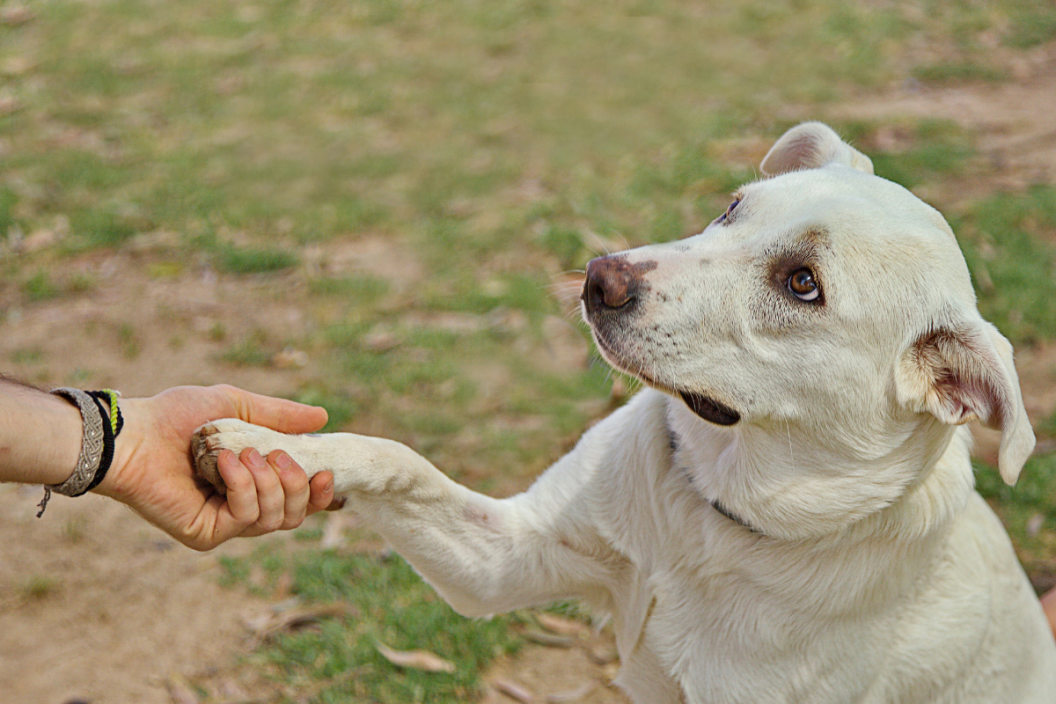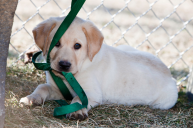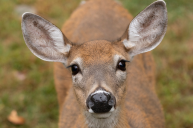With nine types of dog training, how do you find the right one for your pup?
Experienced dog owners know that the keys to a well-behaved pup are early socialization and good training classes. However, there are multiple methods of dog training to choose from. With nine types of dog training, you may wonder which option is best for your pooch.
Dog training is all about reaching the desired goal with your dog's behavior. For example, a young pup may start learning basic commands with clicker training; in contrast, an older pup with behavior problems may need e-collar training or more unique training techniques. You also need to decide if you will train your dog yourself or in group classes with a professional dog trainer. Of course, trainers can work in one-on-one settings as well, depending on your dog's needs.
Training Methodology
There are two different schools of thought regarding dog training methods. Classical conditioning is the method popularized by Pavlov and his pooches — Pavlov taught his pups to associate the sound of a bell with food. The positive association eventually had them all drooling every time they heard a bell chime. Classical conditioning is all about building associations with an outside stimulus that may not have been there before. These associations can provoke the desired behavior or bad behavior depending on the stimulus.
Operant conditioning has more layers than classical conditioning; it is used to encourage good behavior and discourage unwanted behaviors. However, your pup actually gets choices in the matter instead of the singular outcome that classical conditioning has. There are four parts to this training: Positive reinforcement is used when the dog displays good behavior during a training session or throughout the day. Negative punishment removes the positive element when your dog does an unwanted behavior, like barking during your Zoom call. Positive punishment removes the positive while adding in something unpleasant like a shock collar zap or getting squirted with a water bottle. Most dog trainers do not believe in this method, and the same goes for negative reinforcement.
It may be difficult to decide what training program you want to use when training your new pup. Different dog breeds will respond better to different methods. Also, basic obedience training is not a one size fits all kind of thing. For example, one doggy may have behavioral issues that need to be straightened out to become a canine good citizen. In contrast, another might just need some puppy training.
9 Types of Dog Training
1. Clicker Training
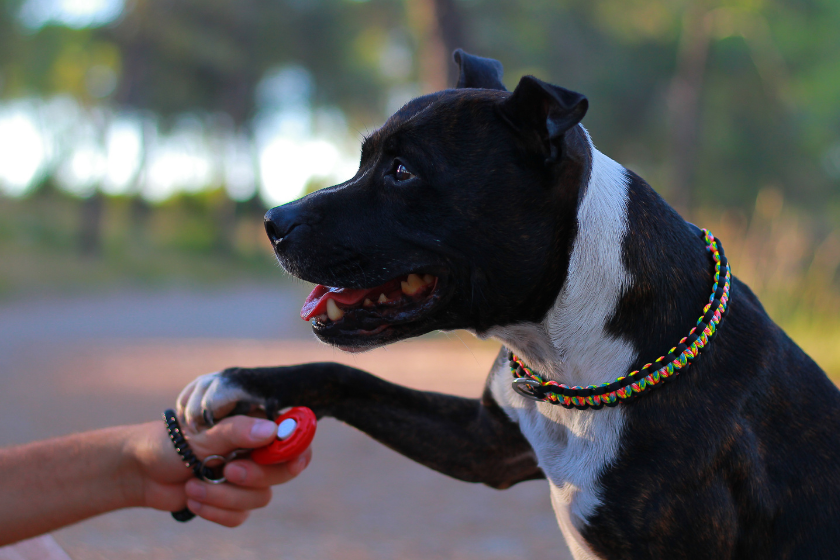
Clicker training rewards positive behaviors in your dog. It works really well with puppies, especially if they are treat or reward-oriented. While training, you use a clicker at the exact moment your dog does something you want, like sits. The click marks the behavior, and the treat that follows reinforces it. First, teach your pup what the clicker means. It usually takes 10-20 repetitions before your pup learns that the click means they are a good dog and will get a treat. It is a great way to teach dog obedience skills positively and can be a way to teach tricks as well!
2. Positive Reinforcement Training
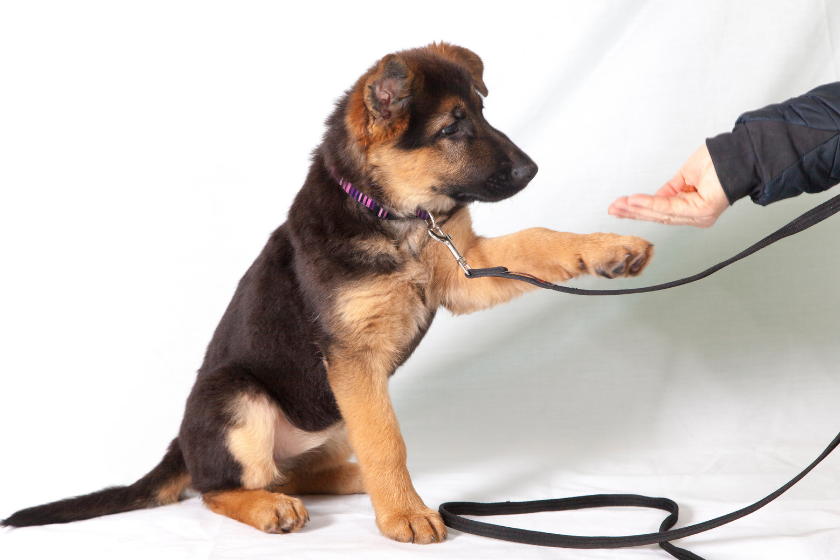
Positive reinforcement training is much like it sounds. Dogs are rewarded for their good behaviors. The reward may be a treat, some love, praise, or a toy for some pups. Pups have a short attention span, so the reward needs to come immediately after the desired behavior. Instruct your pup to sit, keeping the command short and direct. Once their puppy butt hits the ground, say "Good Girl" or "Yes" and give them a treat. Eventually, they will learn that sitting is the gateway to some praise with a little practice. Teach them to sit before going outside, petting, and before feeding, reinforcing good behavior and preventing undesirable behaviors from taking hold.
3. Negative Reinforcement

Negative reinforcement uses some aversive or unpleasant deterrents while you are training your pup — This can be anything from a spray bottle to a prong collar. For example, bark collars are an example of negative reinforcement. If your pup barks, they get a little zap. In theory, they eventually learn that they do not like that discomfort and stop.
4. Dominance Training
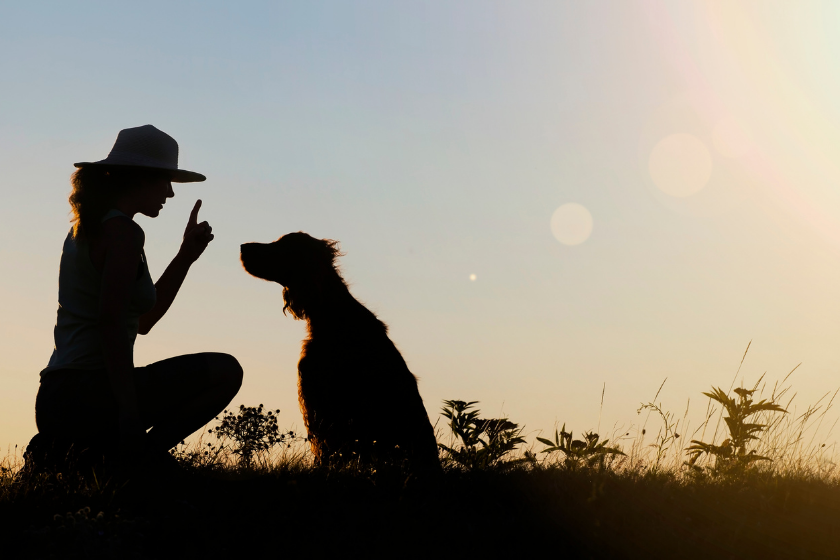
Dominance training establishes you as the alpha dog or pack leader. This training style focuses on using positive punishment to correct your dog's behavior, much like what happens in the wild in wolf packs, according to a study by Rudolph Schenkel in 1947. One technique to establish dominance is not allowing your dog to eat until you finish eating or making sure that you are the first one to walk through doors. However, most trainers do not recommend the practice since there are quite a few inconsistencies with the original study that can damage your relationship with your dog.
5. Electronic Training
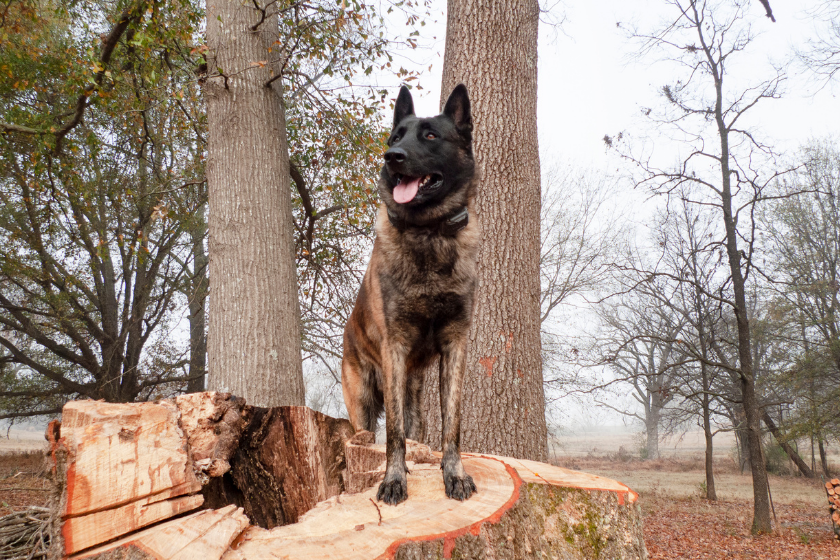
RELATED: Bark Collars for Dogs: Top 5 E-Collars on Amazon
Electronic training uses an e-collar to get your dog's attention. The idea is that once you get their attention, via pressing the button on the remote, you can communicate better.
There are multiple types of e-collars. Static e-collars give a safe and gentle stimulation or soft tone sound. Spray collars have a tone or use a spray of water or citronella to discourage unwanted behaviors. Vibration uses a buzzing to get your dog's attention. In contrast, an ultrasonic collar uses a high pitch tone that only your pup can hear.
6. Scientific Training

Scientific training relies on scientific studies to ascertain the best way to train your pup. Animal behaviorists study animal patterns and interactions to see if they can actually understand a dog's behavior. It looks at what the best training methods are in accordance with their true nature. This method requires staying up to date on new studies and theories to train, but most rely on operant conditioning to implement training in one form or another.
7. Mirror Training
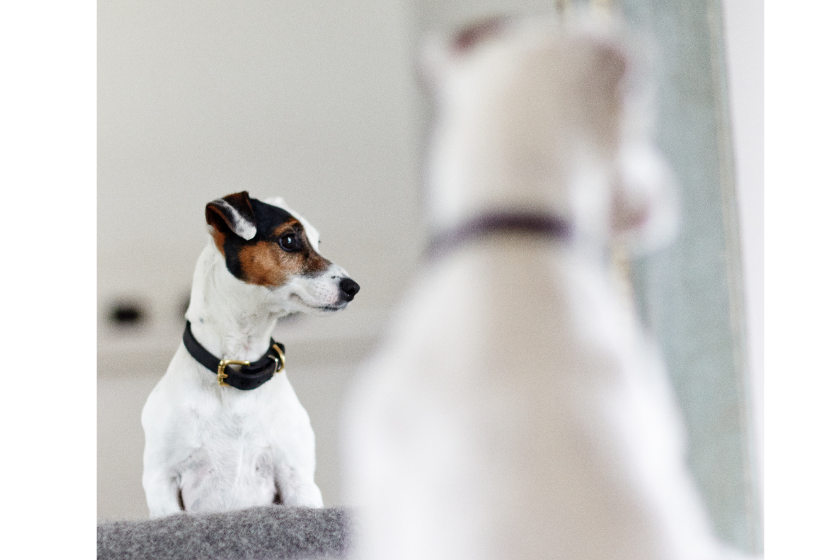
Mirror training or model-rival training leans on dogs learning through observation. Dogs will model good behavior if they see it presented. A trainer has another person act as a model who gets praised for finishing a task or performing a trick. They will get scolded for presenting bad behavior. The dog will see this and mimic the positive behavior. The dog will then get a treat for mirroring the good behavior. Some dogs will naturally pick up good behaviors from their owners if they are very close.
8. Relationship-Based Training
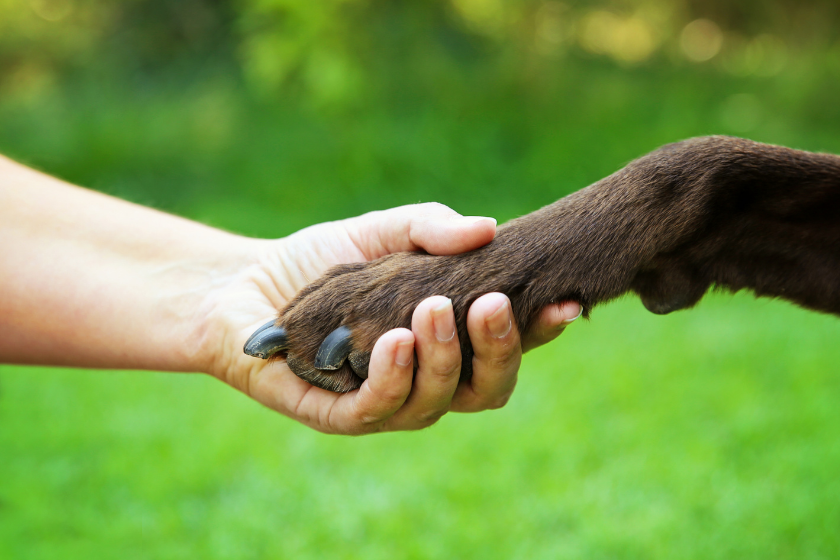
This form of training takes a couple of methods and rolls them into one. The dog owner learns to read their dog's body language and meets their needs first before beginning training. Good behaviors are acknowledged with positive reinforcement.
Each training session builds on the last one. Dogs usually start training with zero distractions, but eventually, distractions get added in when the owner feels like they are ready. However, if the dog does not do the desired behavior, they are not punished. Instead, it is up to the owner to figure out why. This method requires you to get inside your dog's head for it to work. It also takes a lot of time and patience. But, in the long run, you and your dog will develop a closer relationship.
9. Agility Training

Agility training is the next logical step if you want to get your high-energy pup into dog sports. The American Kennel Club offers classes for beginners to get a feel for the sport and introduce them to the basics. However, classes aren't enough practice. It is best to set up some equipment at home for your pup to use a couple of times a week.
What training method did you use with your dog? Tell us on our Wide Open Pets Facebook page.
